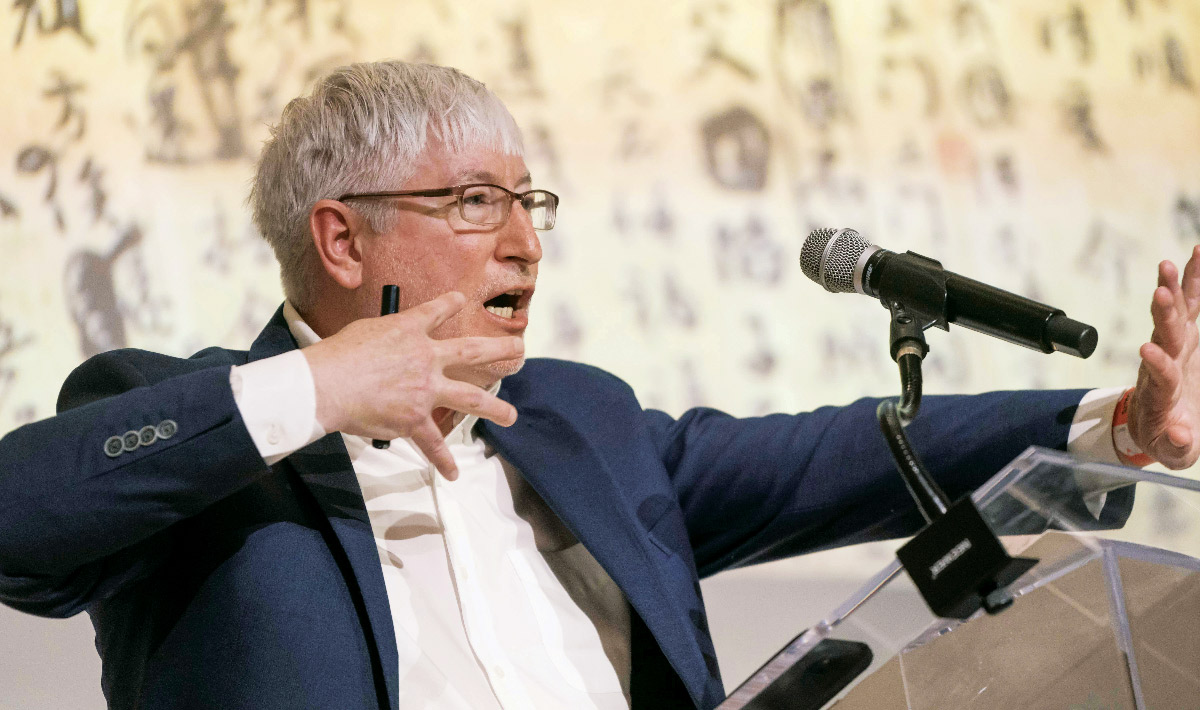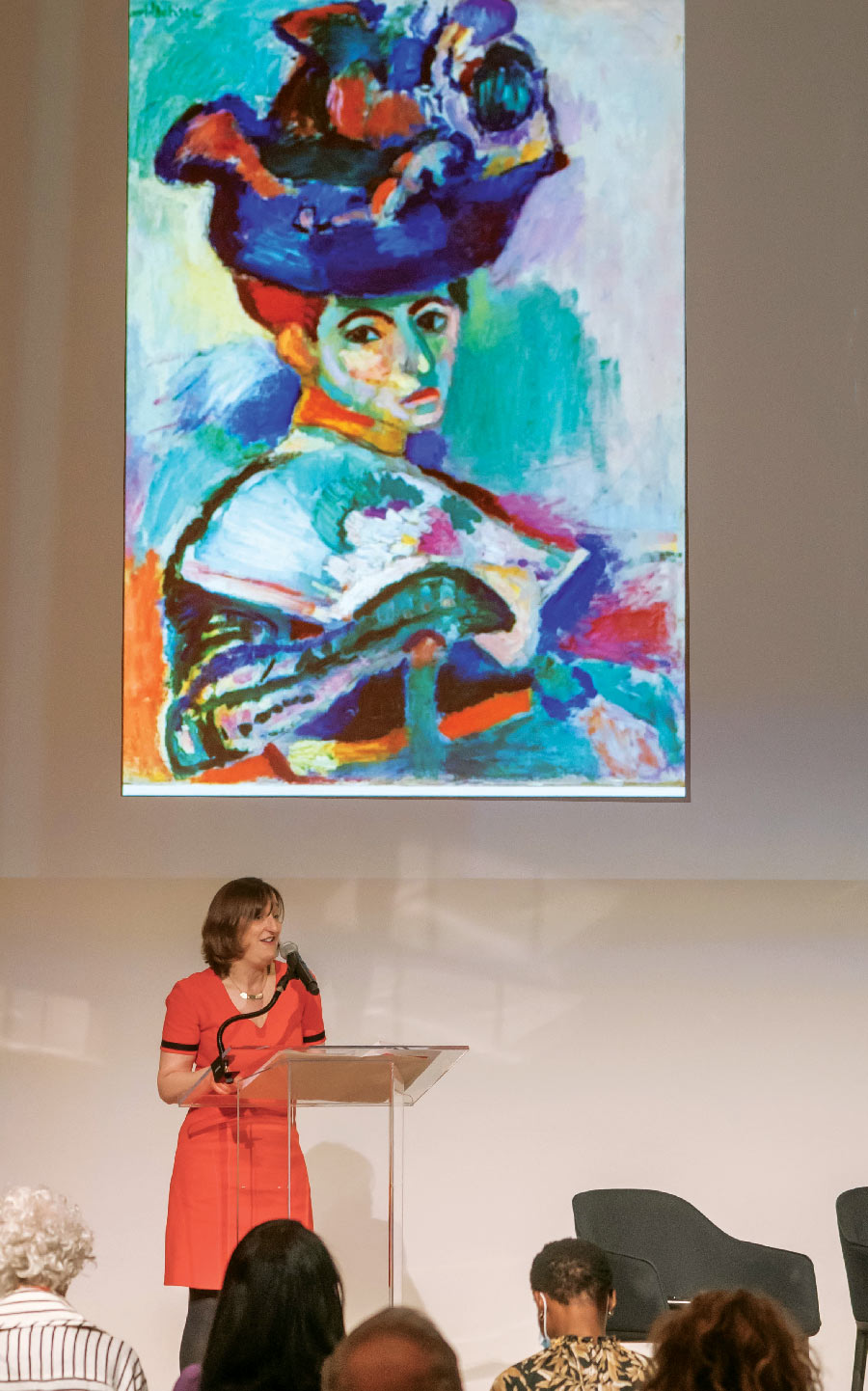Breaking New Ground

The recent inaugural Berkeley Art, Finance, and Law Symposium explored the frontiers of the high-end art world — where NFTs of cartoon apes fetch a $2 million price tag and a boom in bidders from around the globe pushed the spring art auction season into the stratosphere.
Hosted at SFMOMA by the Berkeley Center for Law and Business (BCLB), the unique event brought together lawyers, art dealers, academics, business leaders, critics, and movers and shakers from the tech world into the museum’s bright and high-ceilinged galleries.
“This subject pulls in a lot of people from a lot of different backgrounds,” says BCLB Associate Director Delia Violante, who’s passionate about art law and art markets and proposed and organized the symposium. “Law ties together issues related to art such as intellectual property, financial regulation, fraud and authentication, and the preservation of cultural heritage.”
Violante spent years polishing the concept for the symposium, building on the connection between art and law and discovering along the way that others shared her passion. BCLB Executive Director Adam Sterling ’13, Professor and BCLB Faculty Co-Director Frank Partnoy, and others supported her efforts, which she hopes will one day lead to the creation of a law and art institute at Berkeley Law.
“Art can influence the way we think, view the world, and embrace the many voices and perspectives around us. Art gives a sense of belonging and purpose,” Violante says. “There’s so much to think and talk about, and Berkeley Law should own this space.”
Guests heard from speakers such as SFMOMA General Counsel Adine Varah, blockchain platform Dragonchain CEO Joe Roets, and Covington LLP copyright and trademark practice group co-chair Simon Frankel.
While art and finance regularly outpace the law, much of what’s being wrestled with now — from how to value art-based NFTs to whether images generated by artificial intelligence can be copyrighted — isn’t new.
Varah pointed to Marcel Duchamp’s provocative “Fountain” from 1917 as another example. It’s a signed urinal the artist submitted to needle the newly formed Society of Independent Artists, which had pledged to exhibit every submission.

Regarding artificial intelligence (AI), the U.S. Copyright Office won’t grant copyright to something created solely by a machine. But if well-trained algorithms can create a painting based on written directions, what should happen?
Frankel offered an example: If one of his children opened his iPhone camera and altered the settings, and then snapped a photo of the conference, the resulting image would be copyrightable — even though, in his opinion, the photo took no creativity, which is supposed to be what copyright protects. And the AI painting would be ineligible.
Partnoy conducted a riveting conversation with New York art world titan Ann Freedman, featured in a recent film and podcast, and fellow Berkeley Law Professor Sonia Katyal discussed whether a new reliance on “smart” contracts between buyers and sellers might create new legal conflicts.
Partnoy called the symposium “pathbreaking,” adding that, “Like so many UC Berkeley events, it was an example of how our convening power and multidisciplinary approach can bring together people who might not otherwise talk and learn from each other.” — Gwyneth K. Shaw